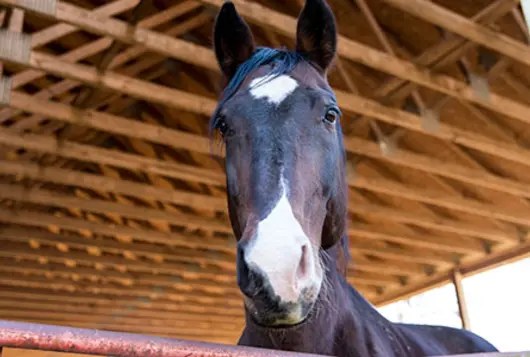Halloween Safety Tips for Pets


Can you believe Halloween is already here? Though it feels like this holiday snuck up on us, don’t let Halloween hazards sneak up on you and your pets. Before you head out to trick-or-treat or throw the Halloween bash of the year, the ASPCA Poison Control wants to remind you of some of the tricks that come along with this holiday.
Costumes
Pet costumes can be super fun and can make for some incredible photos but only if done safely and doesn’t cause your pet stress. We recommend not putting your dog or cat in a costume unless you know he or she loves it. If you do dress up your pet for Halloween, make sure the costume does not limit their movement, sight or ability to breathe, bark or meow. Check the costume carefully for small, dangling or easily chewed-off pieces that could present a choking hazard. We also recommend avoiding a costume with a headpiece. Ill-fitting outfits can get twisted on external objects or your pet leading to injury, so be sure to have your pet try on the costume before the big night. If they seem distressed or show any abnormal behavior, consider letting them wear their “birthday suit” or don a festive bandana instead.
When it comes to human costumes, accessories are the best way to complete your boo-tiful look, but they are just as appealing to pets. Small toys or costume accessories pose a choking hazard to our four-legged friends and the plastic can be toxic. Be sure to keep items like these out of paws’ reach.
Party Time
Halloween brings a flurry of activity with visitors arriving at the door, and lots of strangers (in creepy costumes) can often be scary and stressful for pets. During peak trick-or-treating hours or if you're hosting guests, all but the most social dogs and cats should be kept in a separate, comfortable room with their favorite toys (such as food puzzle toys for dogs and interactive toys for cats). This tactic can soothe energetic pets and those who are anxious around crowds of people or children. If you’re unsure of how your pet will do, it's best to be safe rather than sorry!

Candy
Kids love to stash candy in their rooms, but a dog's keen sense of smell will lead them to even the most cleverly hidden treasure. Unfortunately, several popular Halloween favorites are toxic to pets. Chocolate in all forms — especially dark or baking chocolate — can be very dangerous for cats and dogs. Sugar-free candies containing the sugar substitute xylitol can be life-threatening for dogs when ingested. To keep your pets safe, double check that you left your candy bowls and bags on high counters or safely secured in a cabinet so they cannot get to them.
Pet Identification
Pet IDs can be a lifesaver in finding a lost pet on Halloween — or any day of the year! Tags don’t have to be boring, either. There are plenty of fun, cute and even Halloween-themed pet IDs to pick from. On Halloween, there are a lot more people on the streets and that, combined with strange costumes, can spook pets and cause them to bolt. If you take your pet out after dark, make sure they wear a reflective collar, are securely leashed and have proper identification attached.
Keeping pets safe starts with prevention. Share this information with your community to help pet owners stay informed and prepared.
If you suspect your pet has ingested something toxic, please call your veterinarian or the ASPCA Poison Control at (888) 426-4435 immediately.
We have lots more on this subject:




